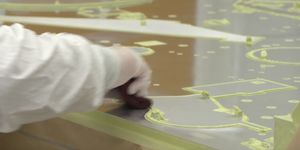South Atlantic islands pummeled by plastic waste
New research published in the journal Current Biology suggests that despite efforts to clean up our oceans, marine debris and plastics are more pervasive than ever. Scientists found 10 times more plastics on the shores of remote South Atlantic islands than were there a decade ago. Frighteningly, these isolated islands even showed similar levels of plastic encroachment as industrialized North Atlantic sites.
A team of scientists representing ten organizations assessed plastic at remote Atlantic Marine Protected Areas in the southern Atlantic, including Ascension, St. Helena, Tristan da Cunha, Gough, and the Falkland Islands. There they surveyed the shores, sea surface, water column, and seabed and analyzed more than 2000 animals from 26 species. From this thorough investigation, they discovered that plastic prevalence changed greatly during 2013-2018.
Marine debris (most usually consisting of plastics) can pose severe threats to marine wildlife. Entanglement, poisoning, starving through ingestion, as well as the arrival of non-indigenous species on floating plastic are of serious concern for many species in these otherwise remote areas.
"Three decades ago these islands, which are some of the most remote on the planet, were near-pristine. Plastic waste has increased a hundred-fold in that time, it is now so common it reaches the seabed. We found it in plankton, throughout the food chain and up to top predators such as seabirds," said lead author Dr. David Barnes from British Antarctic Survey.
Marine debris (most usually consisting of plastics) can pose severe threats to wildlife. Entanglement, poisoning, starving through ingestion, as well as the arrival of non-indigenous species on floating plastic are of serious concern for many species in these otherwise remote areas, explains Science Daily.
Though the scientists observed debris even in the seabed, the most debris (90% of which was plastic) was found on the shorelines. “In 2018 we recorded up to 300 items per meter of shoreline on the East Falkland and St Helena -- this is ten times higher than recorded a decade ago. Understanding the scale of the problem is the first step towards helping business, industry, and society tackle this global environmental issue."
The remoteness of these areas makes it clear that this truly is a global issue; clearly, the plastics are not coming from the islands themselves – they are being brought in by currents from all over the world.
Andy Schofield, a biologist on the study, explains the significance that such interconnectivity has: "These islands and the ocean around them are sentinels of our planet's health. It is heart-breaking watching Albatrosses trying to eat plastic thousands of miles from anywhere. This is a very big wake up call. Inaction threatens not just endangered birds and whale sharks, but the ecosystems many islanders rely on for food supply and health."
Sources: Current Biology, Science Daily









